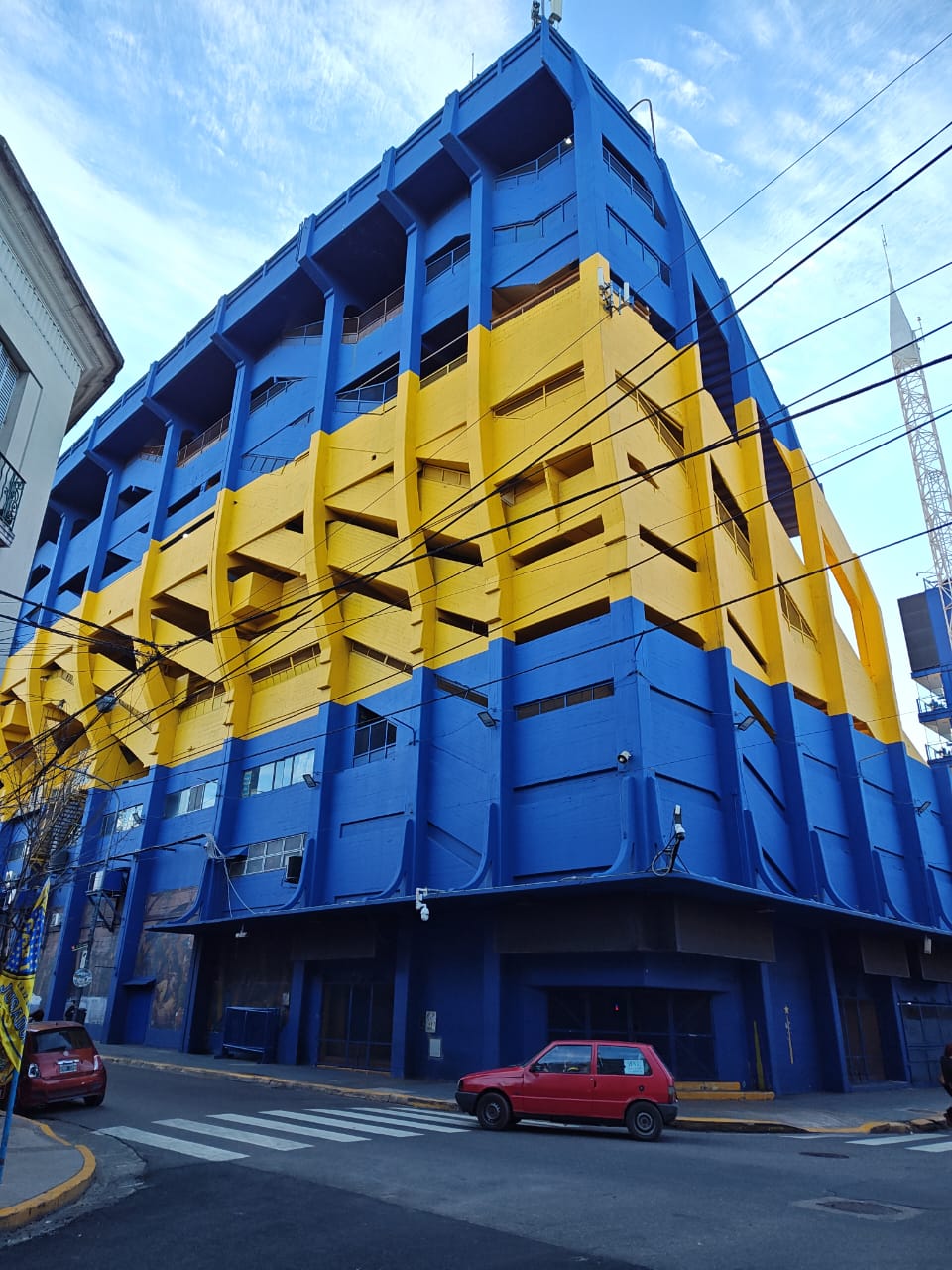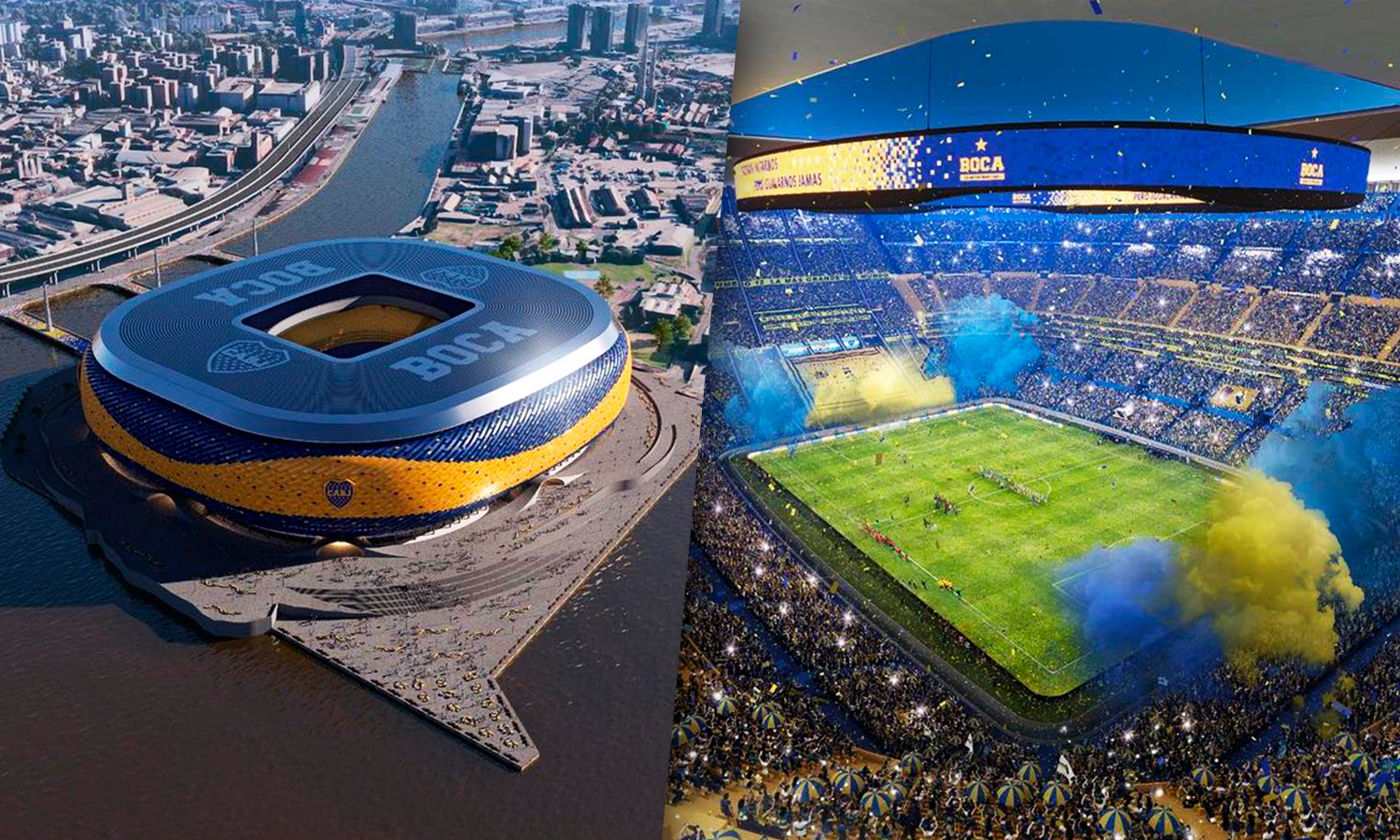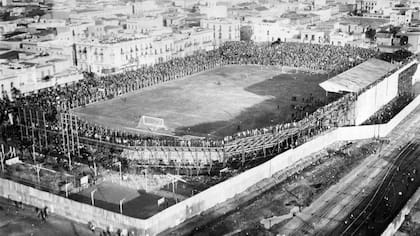La Bombonera en la Cultura Popular argentina y del futbol mundial - La Bombonera in the Argentine Popular Culture and in the world soccer - 阿根廷和世界足球流行文化中的 La Bombonera

La Bombonera no solo es un lugar de encuentro para los aficionados al fútbol, sino que también ha sido inmortalizada en canciones, películas y obras de arte, convirtiéndose en un ícono cultural de Argentina.
Su imagen es reconocida mundialmente y continúa atrayendo a turistas y fanáticos del fútbol de todas partes. La Bombonera, el icónico estadio del Club Atlético Boca Juniors, es uno de los templos más emblemáticos del fútbol mundial. Inaugurado el 25 de mayo de 1940, su nombre oficial es "Estadio Alberto J. Armando", en honor a uno de los presidentes más influyentes de la historia del club.
Ubicado en el barrio de La Boca, Buenos Aires, el estadio fue diseñado por el ingeniero José Luis Delpini y los arquitectos Raúl Bes y Viktor Sulčic este ultimo fue quien le dio el nombre de “LA BOMBONERA” nombre a raíz de una caja de bombones que recibió como regalo y que tenía la misma forma del estadio. Los profesionales enfrentaron el desafío de construir en un terreno reducido el estadio. La estructura vertical y su cercanía al campo de juego hacen que los hinchas se sientan prácticamente sobre el césped, creando una atmósfera única, reconocida por su vibrante hinchada y la famosa "12", la barra brava de Boca.
Desde su inauguración, La Bombonera ha sido testigo de innumerables gestas deportivas, albergando no solo partidos de Boca Juniors, sino también eventos culturales y sociales. Con una capacidad actual de alrededor de 54,000 espectadores, ha sufrido varias remodelaciones, destacando la ampliación de 1996, cuando se añadió una tercera bandeja en uno de sus lados.
El estadio es un símbolo de la pasión xeneize y del fútbol argentino. Para los aficionados, es más que un estadio: es un lugar sagrado donde se vive y respira fútbol, una fortaleza en la que Boca ha escrito algunas de las páginas más gloriosas de su historia. En cada partido, La Bombonera late al ritmo de los cánticos y tambores, manteniendo viva la esencia de su historia y su conexión con los hinchas.
En 1993, la FIFA reconoció a La Bombonera como uno de los estadios más importantes del mundo. Su diseño acústico permite que el sonido de los hinchas resuene de manera impresionante, creando un ambiente electrizante durante los partidos.
Ahora en 2024 se tiene la idea de aumentar la capacidad del estadio a maso menos 80.000 espectadores. Hay 2 ideas principales para concretar esta idea: 1 Es hacer la tribuna encima de la avenida Iberlucea y la otra es hacer una nueva bombonera en la isla demarchi en una parcela de 12 hectáreas separada por 1300 metros de la bombonera original. si esta ultima idea se concretaría seria el estadio mas grande del continente ya que contaría con 112.000 asientos, además de contar con lugares gastronómicos dentro del estadio.
Mi experiencia, al haber vivido en la avenida Patricios, a 10 cuadras de la cancha, fue increíble, los días de partido los edificios cercanos tiemblan . Todo el barrio muestra el azul y amarillo, y las caras de Diego. La Boca es un barrio y la Bombonera es el centro.
N.M FIRVIDA
La Bombonera is not only a meeting place for soccer fans, but has also been immortalized in songs, movies and artwork, becoming a cultural icon of Argentina.
Its image is recognized worldwide and continues to attract tourists and soccer fans from far and wide. La Bombonera, the iconic stadium of Club Atlético Boca Juniors, is one of the most emblematic temples of world soccer. Inaugurated on May 25, 1940, its official name is “Estadio Alberto J. Armando”, in honor of one of the most influential presidents in the club's history.
Located in the neighborhood of La Boca, Buenos Aires, the stadium was designed by the engineer José Luis Delpini and the architects Raúl Bes and Viktor Sulčic, the latter was the one who gave it the name of “LA BOMBONERA”, named after a box of chocolates he received as a gift and which had the same shape of the stadium. The professionals faced the challenge of building the stadium on a reduced site. The vertical structure and its proximity to the playing field make the fans feel practically on the grass, creating a unique atmosphere, recognized by its vibrant fans and the famous “12”, Boca's “barra brava”.
Since its inauguration, La Bombonera has witnessed countless sporting feats, hosting not only Boca Juniors matches, but also cultural and social events. With a current capacity of around 54,000 spectators, it has undergone several renovations, most notably the 1996 expansion, when a third tray was added to one of its sides.
The stadium is a symbol of Xeneize passion and of Argentine soccer. For fans, it is more than a stadium: it is a sacred place where soccer is lived and breathed, a fortress where Boca has written some of the most glorious pages of its history. At every match, La Bombonera beats to the rhythm of the chants and drums, keeping alive the essence of its history and its connection with the fans.
In 1993, FIFA recognized La Bombonera as one of the most important stadiums in the world. Its acoustic design allows the sound of the fans to resonate impressively, creating an electrifying atmosphere during matches.
Now in 2024 the idea is to increase the capacity of the stadium to at least 80,000 spectators. There are 2 main ideas to make this idea a reality: 1 is to build the grandstand on Iberlucea avenue and the other is to build a new bombonera on demarchi island in a 12 hectare plot of land separated by 1300 meters from the original bombonera. if this last idea comes true it would be the biggest stadium in the continent since it would have 112,000 seats, besides having gastronomic places inside the stadium.
My experience, having lived on Patricios Avenue, 10 blocks from the stadium, was incredible, on match days the nearby buildings shake. The whole neighborhood shows the blue and yellow, and Diego's faces. La Boca is a neighborhood and the Bombonera is the center.
N.M FIRVIDA
La Bombonera 不仅是足球迷的聚集地,还被载入歌曲、电影和艺术作品,成为阿根廷的文化标志。
它的形象享誉全球,不断吸引着来自四面八方的游客和球迷。博卡青年俱乐部的标志性球场 La Bombonera 是世界足坛最具代表性的殿堂之一。球场于 1940 年 5 月 25 日落成,正式名称为 “阿尔贝托-阿曼多球场”,以纪念俱乐部历史上最具影响力的主席之一。
球场位于布宜诺斯艾利斯的拉博卡(La Boca)街区,由工程师何塞-路易斯-德尔皮尼(José Luis Delpini)、建筑师劳尔-贝斯(Raúl Bes)和维克多-苏尔契奇(Viktor Sulčic)设计,后者将球场命名为 “LA BOMBONERA”,因为他收到了一盒与球场形状相同的巧克力作为礼物。专业人员面临的挑战是在狭小的场地上建造体育场。球场的垂直结构及其与球场的距离,让球迷们仿佛置身于草地上,营造出一种独特的氛围,以其充满活力的球迷和著名的 “12”(博卡的 “barra brava”)而闻名。
自落成以来,La Bombonera 见证了无数体育盛事,不仅举办过博卡青年队的比赛,还举办过文化和社会活动。该球场目前可容纳约 54000 名观众,曾多次进行翻修,其中最引人注目的是 1996 年的扩建,当时在其中一侧增加了第三个托盘。
这座体育场是谢内泽激情和阿根廷足球的象征。对于球迷来说,它不仅仅是一座球场:它是足球生活和呼吸的圣地,是博卡书写历史最辉煌篇章的堡垒。每场比赛,La Bombonera 都会随着呐喊声和鼓声的节奏而跳动,保持着历史的精髓和与球迷的联系。
1993 年,国际足联认定 La Bombonera 是世界上最重要的体育场之一。它的声学设计能让球迷的声音产生共鸣,在比赛期间营造出激动人心的氛围。
现在,2024 年的设想是将体育场的容量增加到至少 8 万名观众。要实现这一设想,主要有两个方案:一是在伊贝鲁塞阿大道(Iberlucea Avenue)上修建看台,二是在德马尔基岛(Demarchi)上修建一个新的看台,占地 12 公顷,与原来的看台相隔 1300 米。 如果最后一个方案得以实现,它将成为欧洲大陆上最大的体育场,因为它将拥有 112000 个座位,体育场内还将配备美食设施。
我曾住在距离体育场 10 个街区的帕特里西奥斯大道上,我的经历令人难以置信,每逢比赛日,附近的建筑都会颤抖。整个街区都呈现出蓝色和黄色,以及迭戈的面孔。拉博卡是一个街区,而 Bombonera 则是中心。
N.M FIRVIDA

foto ilustrativa de la cancha por: Enrique Lombardi

foto de la portada por carlos firvida